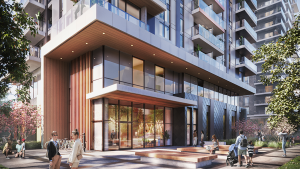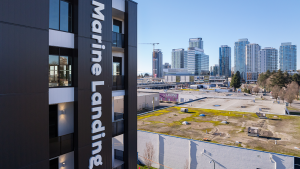DELTA, B.C. — A new report from BuildForce Canada forecasts construction demands are expected to contract in British Columbia in the short term, with elevated interest rates curbing residential demand and work concluding on key major non-residential projects.
But after the near-term slack, a series of increases follow through the remainder of the 10-year forecast period, mostly in the residential sector, with total employment reaching more than four per cent above 2022 levels by 2032.
The analysis comes from BuildForce’s 2023–2032 Construction and Maintenance Looking Forward report for British Columbia, released April 28.
BuildForce projects British Columbia’s construction industry will need to recruit 52,600 additional workers over the next 10 years to keep pace with expansion and replacement demands. More than 38,000 workers are expected to retire during this period.
Although the addition of almost 34,000 workers under the age of 30 from local recruitment efforts will help to offset the retirements, the labour force faces a near-term need for large numbers of experienced skilled workers. By 2032, the industry could face a deficit of 18,700 workers unless anticipated recruitment is increased.
“British Columbia has been one of the busiest construction markets in Canada for several years, with many major non-residential projects stacked on top of a booming residential sector,” said Bill Ferreira, executive director of BuildForce. “Although both will likely experience modest declines in activity in the short term, higher levels of migration into the province will boost residential construction activity across the medium and long terms, while activity in the non-residential sector will fluctuate with the ebb and flow of work on several major projects.”
In the Lower Mainland, which includes Greater Vancouver, Fraser Valley, Sunshine Coast, Squamish and Lillooet, total construction employment is expected to contract through to 2026, as losses in the residential sector offset gains in the non-residential sector. Thereafter, it rises to the end of the forecast period by three per cent, with employment in the non-residential sector accounting for all of the increase. Residential employment is mostly unchanged.
In the Vancouver Island construction market, which includes the Capital Region, Cowichan Valley, Nanaimo, Alberni-Clayoquot, Strathcona, Comox Valley, Powell River, Mount Waddington and Central Coast, construction employment is expected to contract across the forecast period, as residential employment declines by nearly four per cent from its 2022 peak, and non-residential employment is virtually unchanged.
Based on projected new registrations and completion trends, several trades may be at risk of undersupplying the number of new journeypersons required by 2032. Trades within this group include boilermaker, bricklayer, carpenter, gas fitter, glazier, heavy equipment operator, industrial instrumentation technician, industrial mechanic, insulator, lather, mobile crane operator, painter and decorator, powerline technician, roofer and welder.
With the province expected to welcome an average of just under 80,000 newcomers every year through 2032, based on historical settlement trends, the immigrant population will be a key potential source of labour force growth for the construction sector, BuildForce said.
In 2022, there were approximately 33,500 women employed in British Columbia’s construction industry, a contraction of about five per cent from 2021 levels. As a share of the total, women represented just six per cent of the 182,100 tradespeople employed in the industry in 2022. That figure is unchanged from 2021.











Recent Comments
comments for this post are closed